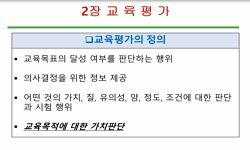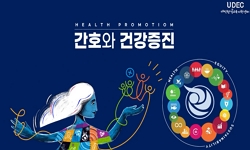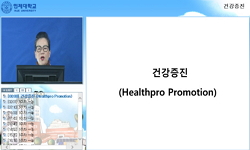According to Article 82 Paragraph (2) of Trade Union and Labor Relations Adjustment Act (hereinafter referred to as “Trade Union Act”), it is legislatively stated that the application for remedy related to unfair labor practices shall be made with...
http://chineseinput.net/에서 pinyin(병음)방식으로 중국어를 변환할 수 있습니다.
변환된 중국어를 복사하여 사용하시면 됩니다.
- 中文 을 입력하시려면 zhongwen을 입력하시고 space를누르시면됩니다.
- 北京 을 입력하시려면 beijing을 입력하시고 space를 누르시면 됩니다.

인사고과 및 승격 누락의 ‘계속하는 행위’ 해당 여부 - 대전지방법원 2022.2.15. 선고 2020구합104971, 2020구합104933(병합) 판결을 중심으로 - = A Study on Performance Assessment and Promotional Failure Falling Under “Practice in Progress” — Focusing on Judgment Case 2022.2.15 2020 Guhap 104971 and 2020 Guhap 104933 (Joinder) of Daejeon District Court —
한글로보기https://www.riss.kr/link?id=A108297982
- 저자
- 발행기관
- 학술지명
- 권호사항
-
발행연도
2022
-
작성언어
Korean
- 주제어
-
등재정보
KCI등재
-
자료형태
학술저널
- 발행기관 URL
-
수록면
611-645(35쪽)
- 제공처
-
0
상세조회 -
0
다운로드
부가정보
다국어 초록 (Multilingual Abstract)
Concerning the remedy of the unfair labor practice, the Lower Court made judgments (Daejeon District Court, 2022.2.15 2020 Guhap 104971 and 2020 Guhap 104933 (Joinder), hereinafter referred to as “Judgement”) on whether the workers can apply remedy of the unfair labor practices on the performance assessment and promotion by the employer. This Case mainly covered whether the series of practices, including the performance assessment and promotion performance by the employer based the right to make human resource decisions, fall under the “Practice in Progress” and whether the remedy on such practices in progress is lawfully applied to the Labor Relations Commission.
The Judgment results were as follows. It was probable that the employer had a single intention to withdraw the worker from Labor Union. Based on such intention, the employer conducted the practices of paying the discriminative wage and not paying the difference from the fair assessment-based wage by assessing the worker unfairly and preventing the worker from getting promoted. It was also deemed that these practices shared the sameness, likeness, and time continuity between them. Considering such decisions, it was deemed that application of remedy made in this Case was deemed to comply with the remedy period pursuant to Article 82 Paragraph (2) of Trade Union Act.
In the previous discussions and academic researches, the detailed meaning of the practices that fall under “Practice in Progress” and the scope of such practice in progress remained unclear.
In response, this paper analyzed and reviewed the Judgment by referring to the discussions made in Korea and Japan. This paper also pointed out that it is necessary to take a step beyond the simple meaning of “Practice in Progress.” To find the rational solution for the related issues, it is necessary to consider the purpose and essence of the systems for remedy (limitation period) and unfair labor practices as well as the stability and continuity of the labor-management relations comprehensively. At least, such comprehensive consideration shall be made under the current Article 82 of Trade Union Act. If the businesses continue to raise problems, it is necessary to consider about extending the application period legislatively just like the cases of Japan.
According to Article 82 Paragraph (2) of Trade Union and Labor Relations Adjustment Act (hereinafter referred to as “Trade Union Act”), it is legislatively stated that the application for remedy related to unfair labor practices shall be made within three months from the date of occurrence of the unfair labor practice, where any such practice is in progress, from the date of its termination. This three-month period is the limitation period and it is deemed as the term where the right to make an application for the remedy of unfair labor practices remains effective. The purpose of such statutes on the limitation period is for the prompt remedy against the unfair labor practices and for stable labor-management relations based on the right to apply remedy.
Concerning the remedy of the unfair labor practice, the Lower Court made judgments (Daejeon District Court, 2022.2.15 2020 Guhap 104971 and 2020 Guhap 104933 (Joinder), hereinafter referred to as “Judgement”) on whether the workers can apply remedy of the unfair labor practices on the performance assessment and promotion by the employer. This Case mainly covered whether the series of practices, including the performance assessment and promotion performance by the employer based the right to make human resource decisions, fall under the “Practice in Progress” and whether the remedy on such practices in progress is lawfully applied to the Labor Relations Commission.
The Judgment results were as follows. It was probable that the employer had a single intention to withdraw the worker from Labor Union. Based on such intention, the employer conducted the practices of paying the discriminative wage and not paying the difference from the fair assessment-based wage by assessing the worker unfairly and preventing the worker from getting promoted. It was also deemed that these practices shared the sameness, likeness, and time continuity between them. Considering such decisions, it was deemed that application of remedy made in this Case was deemed to comply with the remedy period pursuant to Article 82 Paragraph (2) of Trade Union Act.
In the previous discussions and academic researches, the detailed meaning of the practices that fall under “Practice in Progress” and the scope of such practice in progress remained unclear.
In response, this paper analyzed and reviewed the Judgment by referring to the discussions made in Korea and Japan. This paper also pointed out that it is necessary to take a step beyond the simple meaning of “Practice in Progress.” To find the rational solution for the related issues, it is necessary to consider the purpose and essence of the systems for remedy (limitation period) and unfair labor practices as well as the stability and continuity of the labor-management relations comprehensively. At least, such comprehensive consideration shall be made under the current Article 82 of Trade Union Act. If the businesses continue to raise problems, it is necessary to consider about extending the application period legislatively just like the cases of Japan.
국문 초록 (Abstract)
이와 관련하여, 최근 하급심 법원에서는 사용자가 행한 인사고과 및 승격 등을 둘러싸고 부당노동행위 구제신청의 가능 여부가 다투어진 판결(대전지방법원 2022.2.15. 선고 2020구합104971, 2020구합104933(병합) 판결, 이하 ‘대상판결’이라 한다)이 내려진 바 있는데, 이 사건에서는 사용자가 인사권에 기초하여 행한 인사고과 및 승격 등 일련의 행위가 노조법 제82조의 ‘계속하는 행위’에 해당하는지 여부, 그리고 계속하는 행위에 해당한다면, 노동위원회에 적법하게 구제신청을 한 것인지 여부 등이 주요하게 다투어졌다.
그 결과 대상판결에서는 이 사건의 사용자 측이 근로자 측을 노동조합에서 탈퇴시키려는 단일한 의사를 가지고 있을 개연성이 있고, 이에 기초한 인사고과 부여ㆍ승격누락 및 차별적 임금지급 행위, 정당한 평가에 따른 임금과의 차액을 지급하지 않는 행위 사이에는 행위의 동일성ㆍ동종성 및 시간적 연속성이 있다고 보았으며, 이러한 판단에 따라 이 사건 구제신청은 노조법 제82조 제2항이 정하는 구제신청 기간을 준수한 것으로 보았다.
그동안 노조법 제82조 제2항이 규정하고 있는 ‘계속하는 행위’가 구체적으로 어떠한 행위를 의미하는 것이고, 그것이 어디까지 포괄할 수 있는지에 대해서는 분명하지 않고, 학술적으로도 크게 논의되지 못한 측면이 있다.
이에 본 연구에서는 우리나라와 일본에서의 논의를 참고로 대상판결을 분석ㆍ검토하였고, 이러한 문제에 대해 합리적인 해결방향을 찾기 위해서는 단순하게 ‘계속하는 행위’가 의미하는 바는 무엇인가에 대해 규명하는 것에 그치는 것이 아니라, 부당노동행위 제도 및 구제제도(제척기간)의 목적과 본질, 노사관계의 안정성 및 계속성 등을 종합적으로 연관지워 판단할 필요가 있음을 지적하였다. 적어도 현행 노조법 제82조의 구조에서는 이러한 판단이 바람직하며, 산업현장에서 지속적으로 문제가 제기된다면, 일본의 경우와 같이 그 신청기간을 입법적으로 연장하는 방안을 고려해보아야 할 것이다.
현행 노동조합 및 노동관계조정법(이하, ‘노조법’이라 한다) 제82조 제2항에서는 부당노동행위에 대한 구제신청을 함에 있어서 부당노동행위가 있는 날 혹은 계속하는 행위의 경우 그 종...
현행 노동조합 및 노동관계조정법(이하, ‘노조법’이라 한다) 제82조 제2항에서는 부당노동행위에 대한 구제신청을 함에 있어서 부당노동행위가 있는 날 혹은 계속하는 행위의 경우 그 종료일로부터 3월 이내에 하도록 그 기간을 입법적으로 분명히 정하고 있다. 동 기간은 제척기간으로써, 부당노동행위에 대한 구제를 신청할 수 있는 권리의 존속기간으로 이해되며, 이러한 제척기간 규정을 통해 구제신청권을 중심으로 한 부당노동행위의 신속한 구제와 노사관계의 안정성을 도모하려는 데에 그 취지가 있다.
이와 관련하여, 최근 하급심 법원에서는 사용자가 행한 인사고과 및 승격 등을 둘러싸고 부당노동행위 구제신청의 가능 여부가 다투어진 판결(대전지방법원 2022.2.15. 선고 2020구합104971, 2020구합104933(병합) 판결, 이하 ‘대상판결’이라 한다)이 내려진 바 있는데, 이 사건에서는 사용자가 인사권에 기초하여 행한 인사고과 및 승격 등 일련의 행위가 노조법 제82조의 ‘계속하는 행위’에 해당하는지 여부, 그리고 계속하는 행위에 해당한다면, 노동위원회에 적법하게 구제신청을 한 것인지 여부 등이 주요하게 다투어졌다.
그 결과 대상판결에서는 이 사건의 사용자 측이 근로자 측을 노동조합에서 탈퇴시키려는 단일한 의사를 가지고 있을 개연성이 있고, 이에 기초한 인사고과 부여ㆍ승격누락 및 차별적 임금지급 행위, 정당한 평가에 따른 임금과의 차액을 지급하지 않는 행위 사이에는 행위의 동일성ㆍ동종성 및 시간적 연속성이 있다고 보았으며, 이러한 판단에 따라 이 사건 구제신청은 노조법 제82조 제2항이 정하는 구제신청 기간을 준수한 것으로 보았다.
그동안 노조법 제82조 제2항이 규정하고 있는 ‘계속하는 행위’가 구체적으로 어떠한 행위를 의미하는 것이고, 그것이 어디까지 포괄할 수 있는지에 대해서는 분명하지 않고, 학술적으로도 크게 논의되지 못한 측면이 있다.
이에 본 연구에서는 우리나라와 일본에서의 논의를 참고로 대상판결을 분석ㆍ검토하였고, 이러한 문제에 대해 합리적인 해결방향을 찾기 위해서는 단순하게 ‘계속하는 행위’가 의미하는 바는 무엇인가에 대해 규명하는 것에 그치는 것이 아니라, 부당노동행위 제도 및 구제제도(제척기간)의 목적과 본질, 노사관계의 안정성 및 계속성 등을 종합적으로 연관지워 판단할 필요가 있음을 지적하였다. 적어도 현행 노조법 제82조의 구조에서는 이러한 판단이 바람직하며, 산업현장에서 지속적으로 문제가 제기된다면, 일본의 경우와 같이 그 신청기간을 입법적으로 연장하는 방안을 고려해보아야 할 것이다.
참고문헌 (Reference)
1 이을형, "현대노동법" 도서출판 예응 2001
2 하갑래, "집단적 노동관계법" 중앙경제 2021
3 중앙노동위원회, "주제별 판례 분석집: 집단적 노사관계"
4 손향미, "조합원 승진배제, 조합탈퇴 강요의 부당노동행위 입증문제" 한국노동법학회 (42) : 2012
5 오세웅, "인사평가제도 관련 법적 쟁점" 고려대 노동문제연구소 33 : 2016
6 전형배, "인사평가의 정당성" 노동법이론실무학회 (17) : 61-83, 2016
7 박수근, "인사평가와 인사처분에 관한 법적 소고" 대한변호사협회 (462) : 24-38, 2016
8 노상헌, "인사고과의 공정성 판단" 한국노동연구원 2015
9 김태욱, "인사고과와 부당노동행위" 민주사회를 위한 변호사 모임 (14) : 2010
10 피용호, "인사고과에 의한 불이익취급의 부당노동행위와 그 법적 쟁점에관한 비판적 고찰" 한남대 과학기술법연구원 3 : 2015
1 이을형, "현대노동법" 도서출판 예응 2001
2 하갑래, "집단적 노동관계법" 중앙경제 2021
3 중앙노동위원회, "주제별 판례 분석집: 집단적 노사관계"
4 손향미, "조합원 승진배제, 조합탈퇴 강요의 부당노동행위 입증문제" 한국노동법학회 (42) : 2012
5 오세웅, "인사평가제도 관련 법적 쟁점" 고려대 노동문제연구소 33 : 2016
6 전형배, "인사평가의 정당성" 노동법이론실무학회 (17) : 61-83, 2016
7 박수근, "인사평가와 인사처분에 관한 법적 소고" 대한변호사협회 (462) : 24-38, 2016
8 노상헌, "인사고과의 공정성 판단" 한국노동연구원 2015
9 김태욱, "인사고과와 부당노동행위" 민주사회를 위한 변호사 모임 (14) : 2010
10 피용호, "인사고과에 의한 불이익취급의 부당노동행위와 그 법적 쟁점에관한 비판적 고찰" 한남대 과학기술법연구원 3 : 2015
11 김유나, "인사고과를 통한 불이익취급의 부당노동행위 증명방법과 문제점" 한국사회법학회 (42) : 163-193, 2020
12 정병욱, "승진배제행위와 부당노동행위" 민주사회를 위한 변호사 모임 (16) : 2012
13 이병한, "사용자가 근로자에 대하여 노동조합의 조합원이라는 이유로 불리하게 인사고과를 하고 그 인사고과가 경영상 이유에 의한 해고대상자 선정기준이 되어 그 근로자가 해고되었다고 주장하는 경우, 사용자의 행위가 부당노동행위에 해당하는지 여부의 판단 방법" 법원도서관 (79) : 2009
14 김희성, "부당노동행위구제신청에 관한 연구" 법학연구소 (64) : 63-86, 2014
15 권창영, "복수노동조합 병존시의 법률관계" 법원도서관 30 : 1999
16 이상덕, "노조활동을 곤란하게 할 목적으로 한 행위의 부당노동행위해당성 ― 대판 2011. 7. 28. 2009두9574를 중심으로 ―" 한국비교노동법학회 26 : 157-180, 2012
17 김기선, "노조전임자 및 조합원에 대한 승진배제의 부당노동행위 해당 여부" 한국노동법학회 (40) : 2011
18 강희원, "노사관계법" 법영사 2012
19 피용호, "노동판례백선" 박영사 2021
20 노동법실무연구회, "노동조합 및 노동관계조정법 주해Ⅲ" 박영사 2015
21 김유성, "노동법Ⅱ" 법문사 1998
22 이상윤, "노동법" 법문사 2021
23 김형배, "노동법" 박영사 2021
24 임종률, "노동법" 박영사 2021
25 박홍규, "노동단체법" 삼영사 2002
26 松田保彦, "昇給等と「継続する行為」の意義(労働争訟の課題と展望2労働 争訟の諸問題)"
27 青栁馨, "昇給に関する考課査定に基づく賃金上の差別的取扱いの是正を求め る救済申し立てと労働組合法二七条二項の定める期間の遵守" 45 (45): 984-, 1994
28 副島次郎, "労働組合法27条2項における継続する行為の意義" 50 (50): 1978
29 池田稔, "労働組合法27条2項にいう「継続する行為」の意義について:最 近の命令,判決における判断事例から" 69 (69): 1997
30 渡辺章, "労使関係法・雇用関係法 II" 2011
동일학술지(권/호) 다른 논문
-
대표이사의 전단적 대표행위에 대한 회사의 책임을 인정하기 위한 요건
- 한국경영법률학회
- 김동민
- 2022
- KCI등재
-
- 한국경영법률학회
- 김현숙
- 2022
- KCI등재
-
- 한국경영법률학회
- 차상육
- 2022
- KCI등재
-
메타버스 플랫폼 사업자의 OSP 책임에 관한 소고 — Web 3.0 시대 UGC의 특성을 기반으로 한 판단기준의 검토 —
- 한국경영법률학회
- 정원준
- 2022
- KCI등재




 KCI
KCI






